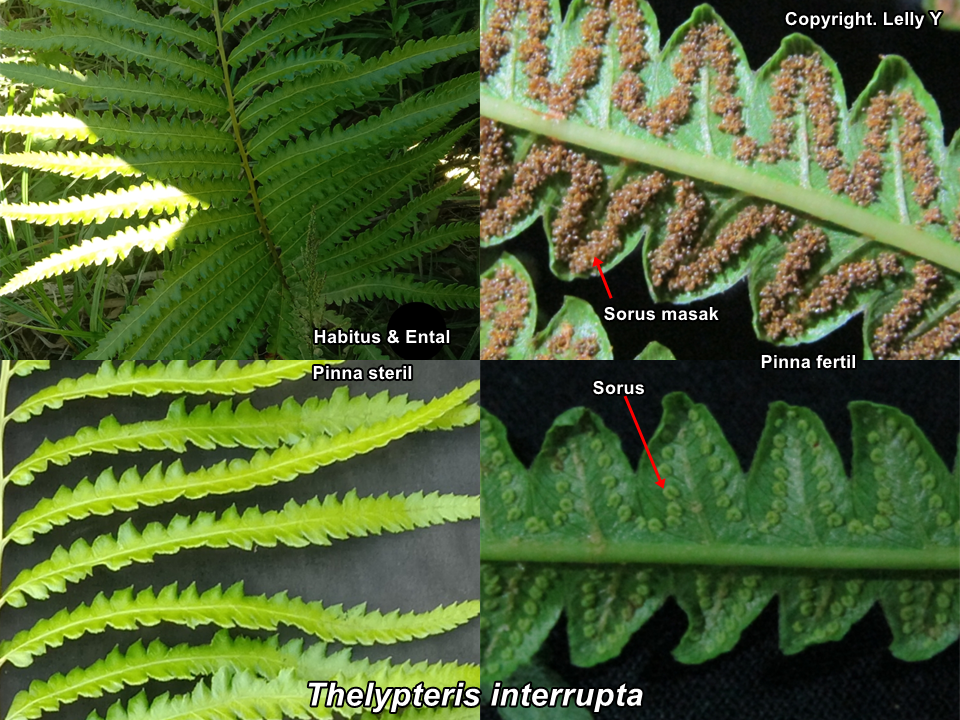Thelypteris interrupta
(Willd.) K.Iwats.
Aspleniaceae
Nama : Paku-pakuan.
Deskripsi : Terestrial. Rimpang pendek. Ental majemuk menyirip; rakis hijau kekuningan; anak helaian daun tersusun berseling pada rakis, ujungnya meruncing, tepi bercangap atau bergigi. Ental steril dan fertil tidak memiliki perbedaan bentuk. Ental fertil terdapat sori pada bagian bawah anak daun, tepi cuping melengkung ke bawah sedikit. Sorus bulat, sori tersusun di antara tepi daun dan pertulangan anak daun (kosta) tersier, hijau sampai kecoklatan, menepung saat masak.
Ekologi : Persebaran alami dari daerah Afrika Tropis, Subtropis, Asia sampai daerah Pasifik. Persebaran di Malesia mencakup daerah Semenanjung Malaysia, Singapore, Indonesia, Papua, dan Filipina. Pada umumnya tumbuh pada ekosistem dataran rendah di bawah kanopi atau pada areal terbuka dengan substrat lembab dan basah. Tumbuh berasosiasi dengan spesies gulma lainnya seperti beberapa jenis dari suku Poaceae. Referensi: Piggot, 1996; POWO (2023); Lin et al., 2013.
Kegunaan : –

